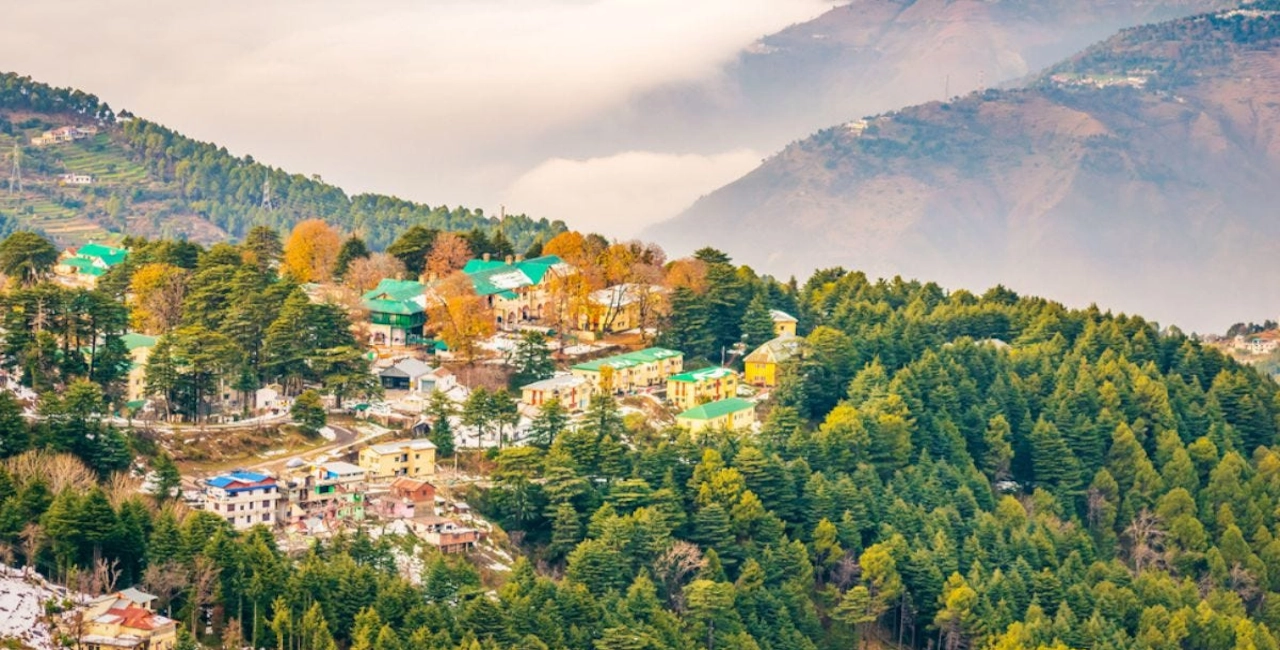Dalhousie, a picturesque hill station nestled in the foothills of the Dhauladhar Range in Himachal Pradesh, is one of India’s most serene and beautiful destinations. Established in 1854 by the British Viceroy, Lord Dalhousie, this town was developed as a summer retreat for British officials. Today, it retains its colonial charm while offering visitors a peaceful escape amidst lush green hills, snow-capped peaks, and refreshing mountain air. Dalhousie’s captivating landscapes, old-world charm, and vibrant culture make it a favorite destination for nature lovers, history buffs, and travelers seeking tranquility.
Geography and Climate
Located at an altitude of about 1,970 meters (6,460 feet) above sea level, Dalhousie sprawls across five hills—Kathlog, Potreyn, Terah, Bakrota, and Bhangora. The town offers breathtaking views of the Dhauladhar mountain range, which is part of the outer Himalayas. Dense forests of pine, oak, and deodar cover the surrounding hills, adding to the area’s natural beauty. The lush meadows, rolling valleys, and rivers make Dalhousie a haven for nature enthusiasts.
The climate of Dalhousie is typically pleasant throughout the year. Summers (March to June) are mild and pleasant, making it an ideal time to visit for those looking to escape the heat of the plains. Monsoon (July to September) brings moderate rainfall, which adds a misty charm to the landscape. Winters (November to February) can be chilly, with temperatures dropping below freezing, and snowfall blankets the town, transforming it into a winter wonderland.
Colonial Heritage and Architecture
Dalhousie’s colonial past is reflected in its architecture, with old churches, bungalows, and schools standing as reminders of its British legacy. The town’s Victorian and Scottish-style buildings, with their sloping roofs and intricate woodwork, transport visitors back to the colonial era. St. John’s Church, built in 1863, is one of the oldest churches in the region and a prime example of the colonial architecture that defines Dalhousie. St. Francis Church, constructed in 1894, is another prominent landmark, with beautiful stained glass windows and a peaceful atmosphere.
The Dalhousie Public School, established in 1970, and the Sacred Heart School, founded in 1901, add to the town’s educational and historical significance. These schools, housed in grand colonial buildings, continue to impart education to students from all over India.
Tourist Attractions in Dalhousie
Dalhousie offers a range of tourist attractions that cater to both nature lovers and those interested in exploring the town’s history and culture.
- Khajjiar: Often referred to as the “Mini Switzerland of India,” Khajjiar is a scenic meadow located about 22 kilometers from Dalhousie. Surrounded by dense forests and snow-covered peaks, Khajjiar is a popular spot for picnics, leisurely walks, and adventure activities like zorbing and paragliding. The Khajjiar Lake, located at the center of the meadow, adds to the charm of this destination.
- Dainkund Peak: Standing at an altitude of 2,745 meters, Dainkund Peak offers panoramic views of the surrounding valleys, rivers, and mountains. The trek to Dainkund is a popular activity for adventure enthusiasts, and the peak is also home to the Pholani Devi Temple, a small shrine that attracts pilgrims.
- Panchpula: A short drive from Dalhousie, Panchpula is a beautiful spot known for its waterfalls, streams, and scenic beauty. It is also the site of a memorial dedicated to Sardar Ajit Singh, a freedom fighter and uncle of Bhagat Singh. Panchpula is ideal for picnics, short hikes, and nature photography.
- Chamera Lake: Formed by the Chamera Dam on the Ravi River, this man-made lake is a great spot for boating and fishing. The pristine waters and the surrounding mountains create a serene environment, making it a popular place for day trips from Dalhousie.
- Satdhara Falls: Located on the way to Panchpula, the Satdhara Falls are a group of seven springs known for their medicinal properties. The water here is believed to have therapeutic effects due to the presence of mica in it. Surrounded by pine forests and lush greenery, the falls are a peaceful retreat.
- Subhash Baoli: Named after Subhash Chandra Bose, who is said to have stayed here during his visit to Dalhousie, Subhash Baoli is a tranquil spot surrounded by dense forests and mountains. It is an excellent place for quiet reflection and enjoying the scenic beauty of the area.
Adventure Activities
Dalhousie is not just a place for relaxation but also a hub for adventure activities. Trekking is one of the most popular activities here, with several trails leading to nearby peaks, meadows, and forests. The Sach Pass Trek, a challenging trek that crosses the Pir Panjal mountain range, is popular among experienced trekkers. Paragliding, horse riding, and boating in nearby lakes like Khajjiar and Chamera offer additional options for adventure seekers.
Shopping and Local Cuisine
Dalhousie is also known for its local handicrafts and souvenirs. The Tibetan Market is a bustling place where visitors can buy woolen clothes, Tibetan carpets, jewelry, and handicrafts. The shops in Gandhi Chowk and Subhash Chowk also sell shawls, Chamba rumals (handkerchiefs), and other local goods.
In terms of cuisine, Dalhousie offers a mix of traditional Himachali food and North Indian dishes. Local delicacies include Madra, Chana Bhatura, and Siddu, a type of steamed bread. The town’s cafes and restaurants also serve delicious Tibetan food, including momos and thukpa.
Conclusion
Dalhousie is a serene and charming hill station that offers a perfect blend of natural beauty, colonial heritage, and adventure. Whether you are looking for a peaceful retreat, a journey into history, or an adrenaline-filled vacation, Dalhousie has something for every traveler. With its scenic landscapes, rich cultural heritage, and pleasant climate, this hill station remains a timeless destination for those seeking tranquility and beauty in the lap of the Himalayas.


0 Comment